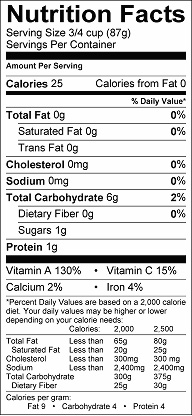Contents:
Common Names | Parts Usually Used | Plant(s) & Culture | Where Found | Medicinal Properties | Biochemical Information
Legends, Myths and Stories | Uses | Formulas or Dosages | Nutrient Content | How Sold | Resource Links | Bibliography
Scientific Names

- Cucurbita pepo L.
- Gourd family
Common Names
- Field pumpkin
Parts Usually Used
Seeds and husks
Back to Top
Description of Plant(s) and Culture
The pumpkin is a large, annual, creeping plant; the stem, which may reach a length of 30 feet, has branched tendrils and bears alternate, stiff-haired, triangular or ovate-triangular leaves that may be sharply or weakly lobed. The leaves are larger than a hand and have irregularly sharp-serrate margins. Solitary, yellow, funnel-shaped flowers with pointed lobes grow on angular peduncles that expand where the flower attaches. Flowering time is from June to August. The fruit is the familiar large, orange, furrowed pumpkin which contains numerous white, elliptic seeds. This is the pumpkin made into jack-o-lanterns at Halloween.
Back to Top
Where Found
Widely cultivated in warm and temperate climates for its fruit.
Back to Top
Medicinal Properties
Anthelmintic
Back to Top
Biochemical Information
Anthelmintic properties, isprenoid compound, high mineral content, and vitamin F
Back to Top
Legends, Myths and Stories
Pumpkin seeds as a disease-preventative, has been little noticed until now. The rejuvenating powers for men are extolled with praise by popular medicine both in America and in Europe. Experience reveals that men in those countries where the seeds of the pumpkin plant are copiously eaten throughout a lifetime remain amazingly free of prostatic hypertrophy (prostate trouble) and all its consequences.
Men without prostate trouble show high zinc concentrations; while men with the sick prostate have low zinc concentrations. Studies show that in regions where there is a widespread deficiency of zinc, the sex organs to not develop properly.
Pumpkin fresh flowers add flavor to salads. Eaten as a side dish, the recipe is as follows: Pick flowers when vines are blooming, wash and roll in paper towel to dry. Dip in beaten egg, roll in fine bread or cracker crumbs and fry in buttered pan.
Pumpkin seeds are just about the richest natural sources of zinc nutrition ever found. The use of pumpkin seeds for their beneficial effect on the prostate gland is as old as the ages. (Referred to as He-man power). A decoction of the unhulled seeds have long been of use in domestic folk-medicine.
Back to Top
Uses
Used for prostate disorders, stomach problems, worms, and nausea as in morning sickness, motion sickness and swollen prostate. The oil of the seeds are useful for healing wounds, especially burns, and for chapped skin.
Back to Top
Formulas or Dosages
Seeds: to use for worms, crush 7-14 oz. seeds for children, up to 25 oz. for adults, and stir into fruit juice to make a mash to be eaten. 2-3 hours later, take castor oil to drive out the worms. Take care, especially with tapeworm, that the entire worm is expelled.
Back to Top
Nutrient Content
Good source of plant protein, high mineral content, and vitamin F

How Sold
Supermarkets and health food stores
Be sure to specify hulled or unhulled seeds
Back to Top
Resource Links
Pumpkins Could Help Control Glycemic Levels for Diabetics
Futurity: Can Pumpkins Ward Off Diabetes?
University of Nottingham: Pumpkins can ward off more than evil spirits
Pumpkins: Did You Know They are a Berry?
LiveStrong.com: Calories in Canned Pumpkin
U.S. Department of Agriculture Nutrition Database: Canned Pumpkin
Bibliography
![]() Pumpkin, Pumpkin:: Folklore, History, Planting Hints and Good Eating by Anne Copeland, Paperback – September 30, 2019.
Pumpkin, Pumpkin:: Folklore, History, Planting Hints and Good Eating by Anne Copeland, Paperback – September 30, 2019.
![]() The Herb Book
The Herb Book, by John Lust, Bantam Books, 666 Fifth Avenue, New York, NY. copyright 1974.
![]() Planetary Herbology
Planetary Herbology, by Michael Tierra, C.A., N.D., O.M.D., Lotus Press, PO Box 325, Twin Lakes. WI 53181., Copyright 1988, published 1992
![]() Prescription for Nutritional Healing, Fifth Edition: A Practical A-to-Z Reference to Drug-Free Remedies Using Vitamins, Minerals, Herbs & Food Supplements
Prescription for Nutritional Healing, Fifth Edition: A Practical A-to-Z Reference to Drug-Free Remedies Using Vitamins, Minerals, Herbs & Food Supplements, by James F. Balch, M.D. and Phyllis A. Balch, C.N.C., Avery Publishing Group, Inc., Garden City Park, NY
![]() Webster’s New World Dictionary
Webster’s New World Dictionary, Third College Edition, Victoria Neufeldt, Editor in Chief, New World Dictionaries: A Division of Simon & Schuster, Inc., 15 Columbus Circle, New York, NY 10023
 How Indians Use Wild Plants for Food, Medicine & Crafts
How Indians Use Wild Plants for Food, Medicine & Crafts, by Frances Densmore, Dover Publications, Inc., 180 Varick Street, New York, NY 10014, first printed by the United States Government Printing Office, Washington, in 1928, this Dover edition 1974
 The Magic of Herbs in Daily Living
The Magic of Herbs in Daily Living, by Richard Lucas, Parker Publishing Co. (1988).
 Old Ways Rediscovered
Old Ways Rediscovered, by Clarence Meyer, Meyerbooks, publisher, PO Box 427, Glenwood, Illinois 60425, published from 1954, print 1988
 Prairie Smoke
Prairie Smoke, by Melvin R. Gilmore, Minnesota Historical Society Press, St. Paul, Minnesota 55101, copyright 1987.
 Secrets of the Chinese Herbalists
Secrets of the Chinese Herbalists, by Richard Lucas, Parker Publishing Company, Inc., West Nyack, NY, 1987.
![]() The Yoga of Herbs: An Ayurvedic Guide to Herbal Medicine
The Yoga of Herbs: An Ayurvedic Guide to Herbal Medicine, by Dr. David Frawley & Dr. Vasant Lad, Lotus Press, Twin Lakes, Wisconsin, Second edition, 1988.
 The Rodale Herb Book: How to Use, Grow, and Buy Nature’s Miracle Plants (An Organic gardening and farming book)
The Rodale Herb Book: How to Use, Grow, and Buy Nature’s Miracle Plants (An Organic gardening and farming book), edited by William H. Hylton, Rodale Press, Inc. Emmaus, PA, 18049., 1974
